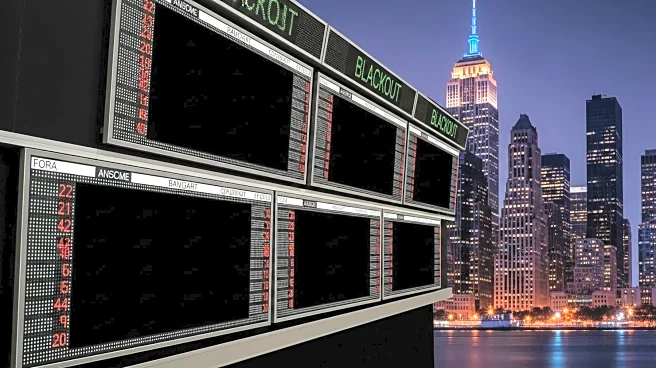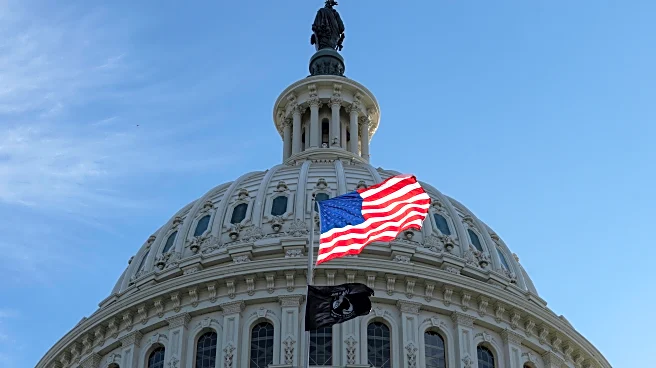What is the story about?
What's Happening?
The U.S. services sector experienced a stall in activity during September, marked by a significant slowdown in new orders and continued weakness in employment. According to the Institute for Supply Management (ISM), the nonmanufacturing purchasing managers index (PMI) fell to 50, indicating a breakeven level, down from 52.0 in August. This decline reflects broader economic challenges, including tariffs on imports that have dampened business sentiment and constrained activity across both services and manufacturing sectors. The measure of new orders received by services businesses dropped to 50.4 from 56.0 in August, while backlog and export orders remained subdued. Employment in the services sector showed a slight increase to 47.2 from 46.5 in August, but it remained in contraction territory for the fourth consecutive month, suggesting stagnation in the labor market.
Why It's Important?
The stagnation in the U.S. services sector is significant as it accounts for more than two-thirds of the country's economic activity. The slowdown in new orders and weak employment figures highlight ongoing challenges in the labor market, exacerbated by tariffs and the rise of artificial intelligence. These factors have contributed to a slackening demand for workers, with immigration raids further reducing labor supply. The current economic conditions may prompt the Federal Reserve to consider cutting interest rates to stimulate the labor market, although the full inflationary effects of tariffs are yet to be felt. The ISM survey's measure of prices paid by businesses has edged up, indicating firming services inflation driven by higher costs in sectors such as airlines, restaurants, and hospitality.
What's Next?
Economists anticipate that the Federal Reserve may cut interest rates this month to address the lackluster labor market. The central bank had already resumed easing policy in September, reducing its benchmark overnight interest rate by 25 basis points to the 4.00%-4.25% range. However, a rate cut is not guaranteed due to the potential inflationary effects of tariffs. The ISM survey's findings could gain more prominence following a government shutdown that delayed the release of the monthly employment report for September. Stakeholders, including businesses and policymakers, will be closely monitoring these developments to assess their impact on economic growth and labor market dynamics.
Beyond the Headlines
The current economic situation underscores the complex interplay between trade policies, technological advancements, and labor market dynamics. The rise of artificial intelligence is reshaping demand for workers, while tariffs continue to influence business sentiment and economic activity. These factors contribute to a broader economic environment characterized by uncertainty and potential shifts in policy responses. The ongoing challenges in the services sector may lead to long-term implications for U.S. economic growth and labor market stability.
AI Generated Content
Do you find this article useful?















